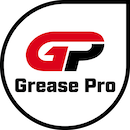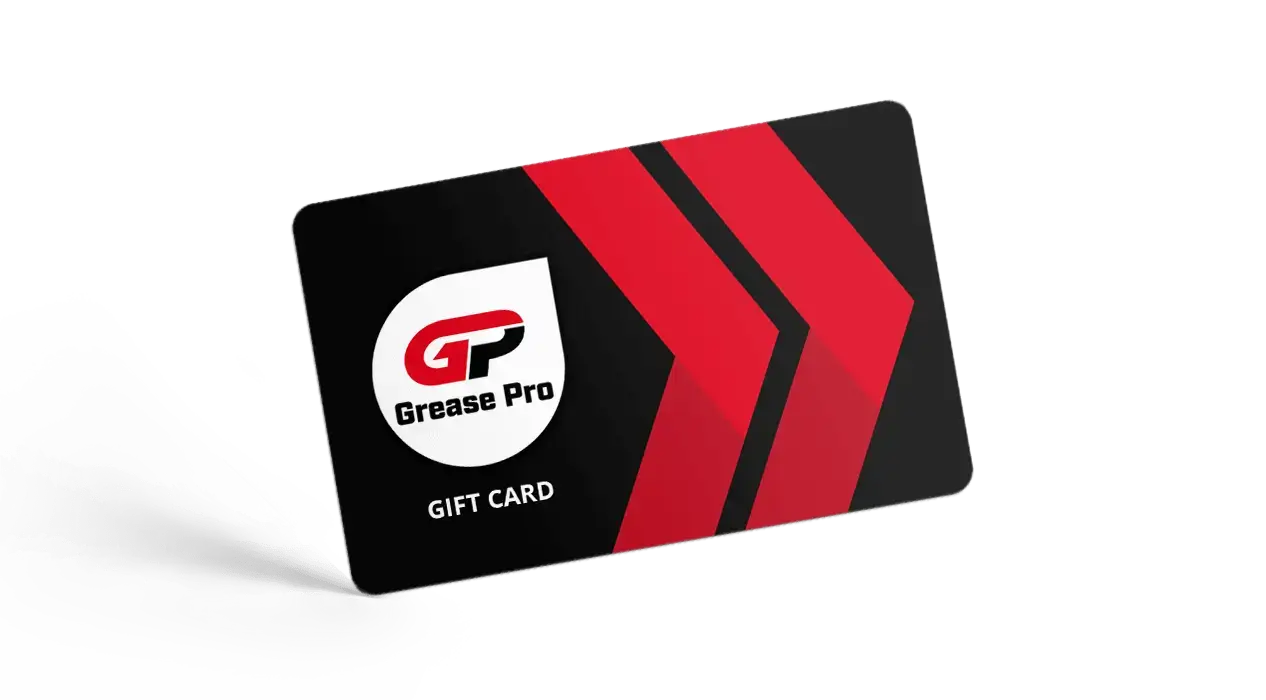Ever noticed a small light on your dashboard that looks like a tire with an exclamation mark? That’s your Tire Pressure Monitoring System (TPMS) doing its job. This nifty feature is crucial not just for your car’s efficiency but for your safety on the road. While seeing a warning light on your dash might be alarming, think of it as a heads-up from your car, warning you before a small issue like low tire pressure turns into a bigger problem, like poor fuel economy or even a dangerous tire blowout. Most of the time, this light turns on for simple reasons—maybe the air in your tires has dipped a bit, or a change in the weather has affected your tire pressure. Getting to know why this light comes on and what to do can make your drives smoother and safer, so let’s take a closer look.
What is the TPMS Light?
Your TPMS, or Tire Pressure Monitoring System, is a sensor that monitors the air pressure within your tires. While most modern vehicles are equipped with this feature, it’s important to note that not all cars have a TPMS. Each sensor is usually located in the valve stem or attached to the wheel inside the tire. If the air pressure in any of your tires drops significantly below the manufacturer’s recommended level, the TPMS activates to alert you. This prompt helps ensure your vehicle remains safe to drive, encouraging a quick check and adjustment of the tire pressure as needed.
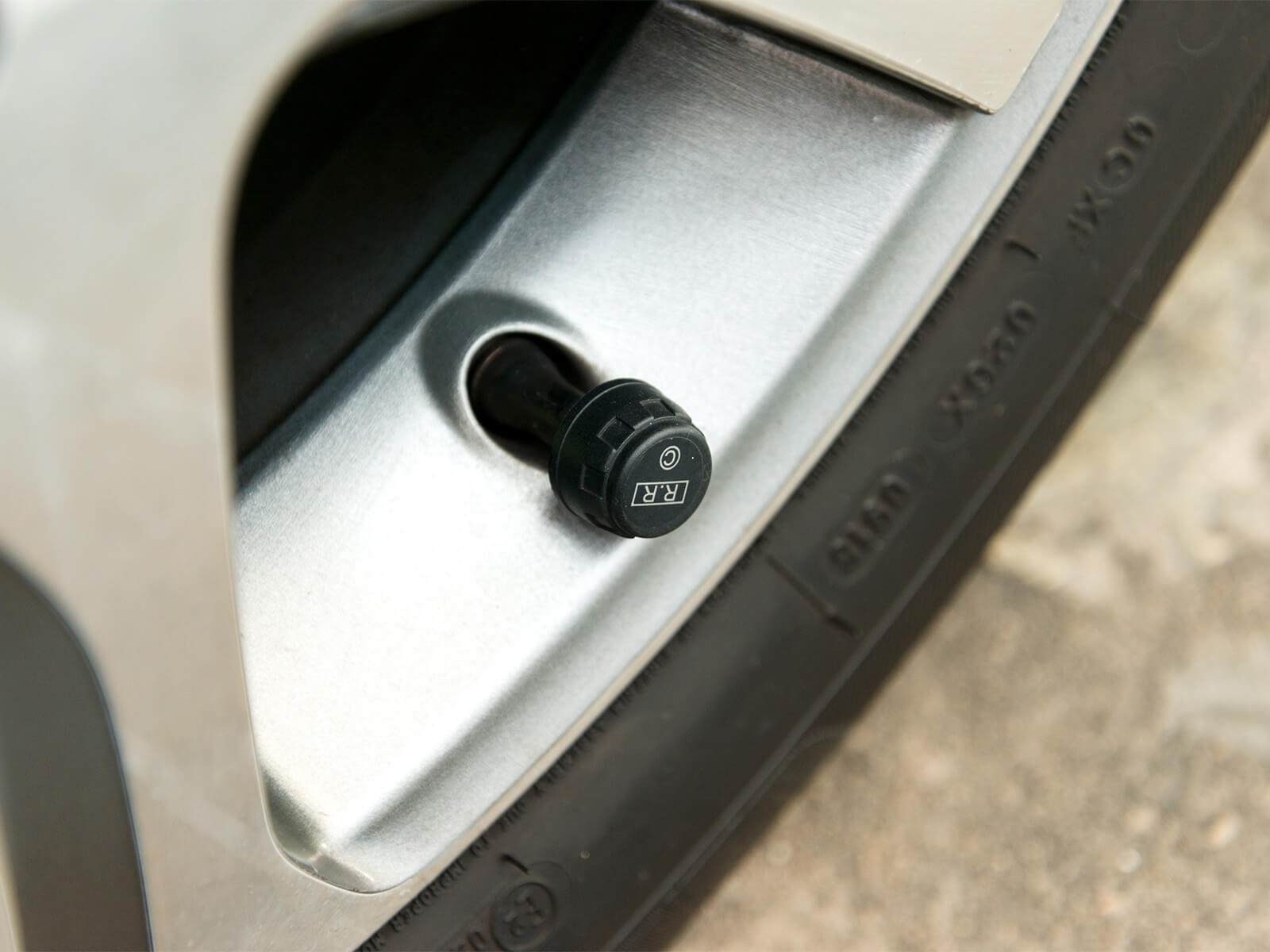
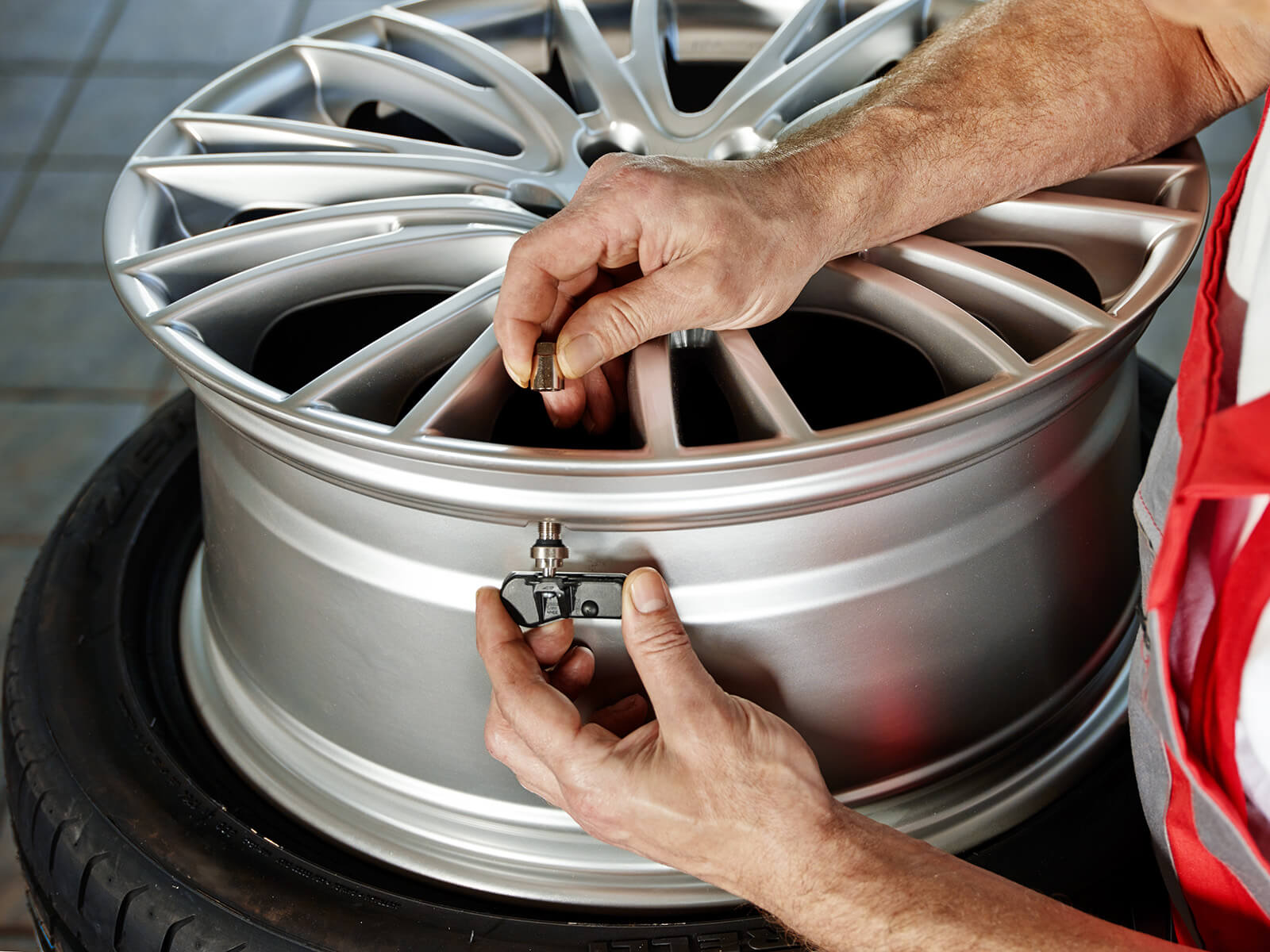
Key Reasons Why Your TPMS Light Is On
- Low Tire Pressure: The most common reason for the TPMS light to come on is simply that the air pressure in one or more of your tires is too low. This can happen due to normal air loss over time or a small leak.
- Temperature Changes: As the seasons change, so does the air pressure in your tires. Cold weather can cause your tire pressure to drop, while hot weather might increase it. Both scenarios can trigger your TPMS light.
- Sensor Issues or Malfunctions: Although less common, sometimes the TPMS itself might have a hiccup. This could be due to a failing battery in the sensor or other electronic issues within the system.
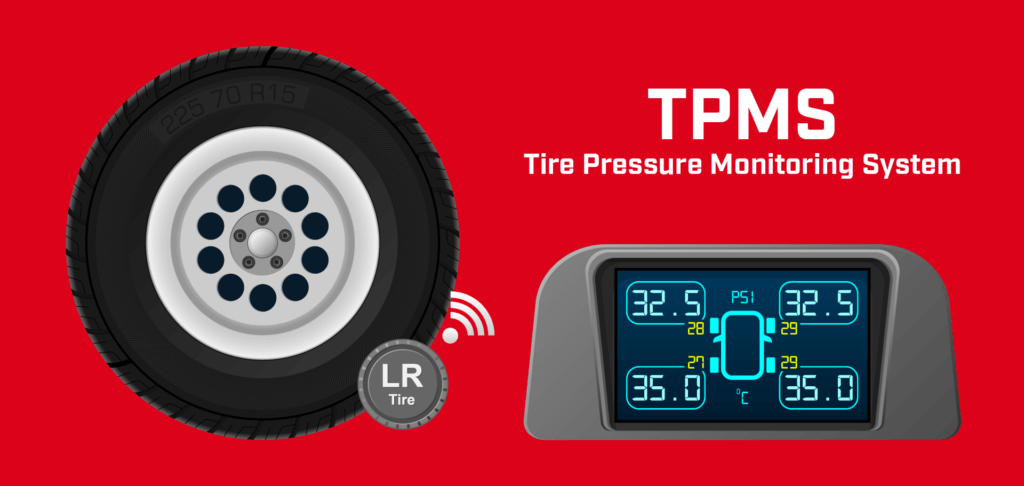
What to Do When Your TPMS Light Turns On
When that TPMS light flicks on, your first move should be to check the air pressure in your tires. Here’s a simple way to do it:
- Grab a Reliable Tire Gauge: Always have a good tire pressure gauge on hand for accurate readings.
- Check Each Tire: Pop off the valve stem caps and press the gauge firmly onto each one.
- Compare Pressure to Recommendations: Look up the recommended pressure in your vehicle’s manual or on the sticker inside the driver’s door.
- Adjust as Needed: If your tires are a bit low, pump them up to the right level or let some air out if they’re too high.
Keeping your tires at the right pressure isn’t just about avoiding that annoying light—it’s essential for your tires’ longevity, your car’s fuel efficiency, and keeping you safe while you drive.
Looking for more easy-to-follow tire tips? Watch our quick video on essential tire checks you can do yourself—it’s all explained in under a minute!
TPMS Light Troubleshooting Tips: Why does my tire pressure light keep coming on?
Tire Pressure Light Stays On
Seeing your TPMS light stay on can be a little concerning. It generally means that one or more of your tires are running low on air. But if you’ve already topped up the air and the light’s still on, there might be more to it:
- Double-check your tire pressures: After filling your tires, it’s always a good idea to go over the pressures again to make sure they’re just right. Sometimes, you can fill one tire just for another to become low on air.
- Inspect for leaks: Take a good look at your tires for any signs of punctures or debris that might cause a slow leak. No one wants to find a nail in their tire, but it’s important to find any leaks quickly to ensure a safe drive.
TPMS Light That Goes On and Off
Changes in temperature can lead your TPMS light to flicker on and off as the air pressure in your tires adjusts to the weather:
- Temperature Impact: Expect the air pressure to drop in cooler weather and rise when it’s warm, which can trigger your TPMS light.
- Monitor Closely: Keep a close watch on both the light and the external temperatures. Checking your tire pressure becomes even more important when the weather fluctuates, as it’s known to do in Northwest Florida.
- Sensor Check: A sensor might also be sending out false signals if the light doesn’t settle despite your tires having stable pressures. This is particularly likely if the light flickers when you turn your car on and then stays lit after a few minutes.
- Consider sensor issues: In general, the TPMS sensor light should turn off within minutes after filling your tires. However, the sensor itself could malfunction, giving off false alarms or not resetting properly. If the light remains on even after you’ve adjusted the pressure, this could be the case.
When to See a Professional
If you’ve done all you can and the light’s behavior still doesn’t make sense, or you suspect the sensors are faulty, getting a professional opinion is a wise move.
Common Misconceptions About Your TPMS: Myths vs. Facts
You know your TPMS helps keep tabs on your tire pressure, but there are a few myths out there that might give you the wrong idea about what it can really do. Here are some common myths about TPMS and the facts to set them straight:
Myth: TPMS completely replaces the need for manual checks.
Fact: While TPMS is a great tool for monitoring tire pressure, it doesn’t replace the need for regular manual checks with a tire gauge. TPMS alerts you when your tire pressure is significantly low, but manual checks can help you maintain optimal tire pressure and catch issues that TPMS might not detect immediately.
Myth: TPMS monitors tire health beyond just pressure.
Fact: TPMS specifically monitors tire pressure only. It doesn’t assess the overall health of your tires, such as tread depth or structural integrity. Regular inspections by a professional are necessary to evaluate these aspects and ensure your tires are in safe driving condition.
Understanding these facts helps you maintain your vehicle more effectively and prevents relying too heavily on automation that’s meant to assist, not replace regular maintenance practices.
What Happens If I Ignore the TPMS Light?
When the TPMS light turns on, there’s no need to panic. It’s generally okay to continue driving for a short distance, but you should aim to check your tire pressure within a day or so. This helps you avoid driving on tires that might be dangerously low on air. While it’s not a crisis, it certainly shouldn’t be ignored. Ignoring the TPMS light may not seem like a big deal at first, but it can lead to several problems down the road:
- Fuel Efficiency Takes a Hit: Tires that aren’t properly inflated have to work harder, which means your car burns more fuel. Keeping them at the right pressure helps ensure your vehicle runs efficiently.
- Uneven and Accelerated Tire Wear: Low tire pressure can cause your tires to wear unevenly and prematurely. This not only shortens the life of your tires but could also mean more frequent replacements and increased costs. No one wants to have to buy new tires sooner than they have to.
- Reduced Handling and Safety: Proper tire pressure is crucial for good handling and safe driving, especially in sudden stops or turns. Low pressure compromises these aspects, making your vehicle less safe.
- Potential for Tire Failure: The worst-case scenario, a tire blowout, could happen if you ignore your TPMS light long enough. Driving on severely under-inflated tires increases the stress and heat, leading to potential tire failure, which can be dangerous at high speeds.
Keep Your Tires in Check with Grease Pro
So before you hit the road, make sure your tires are properly inflated to prevent your TPMS light from making an appearance. Remember, you can typically find the correct tire pressure for your vehicle in the owner’s manual or on a sticker inside the driver’s side door jamb. And if you’re ever unsure about how to check or adjust your tire pressure, Grease Pro is here to help.
Our team is well-equipped to handle all your tire pressure monitoring needs, from routine checks to sensor troubleshooting and more. Don’t wait for a small issue to turn into a major one—let us take care of your tires so you can drive with confidence and safety.
Schedule a service online or simply stop by the location closest to you!
